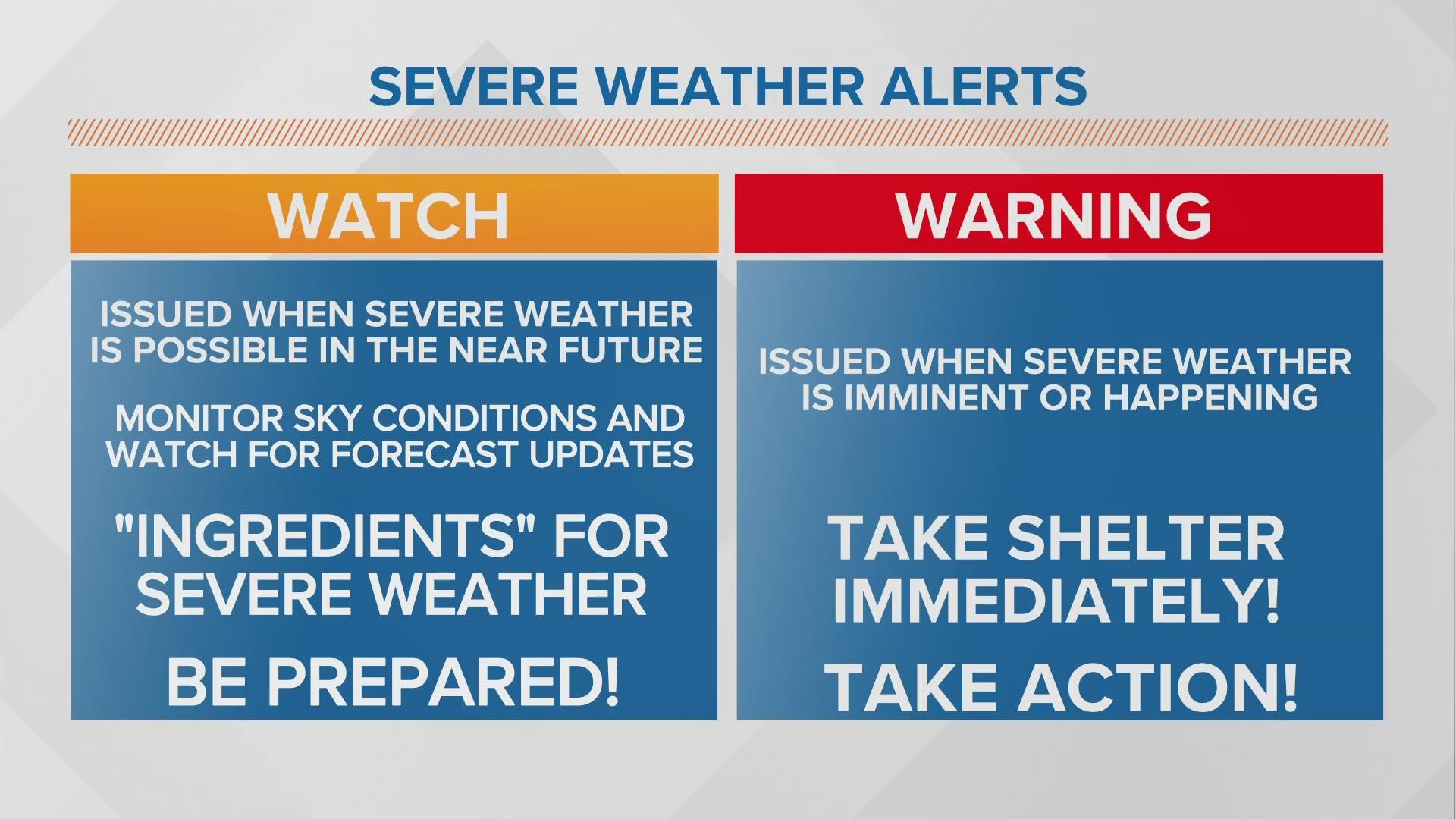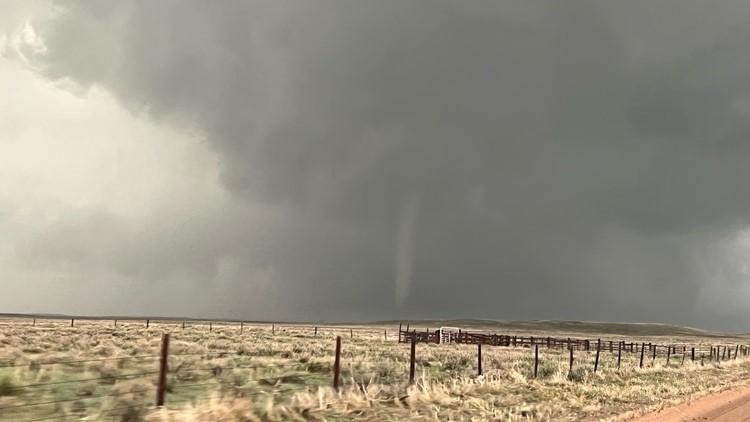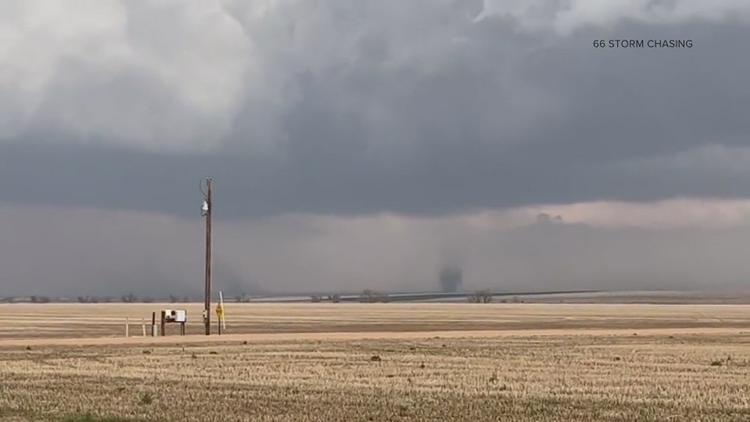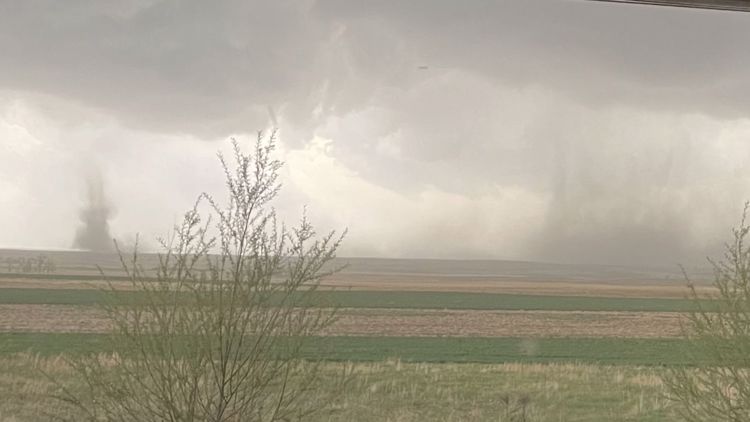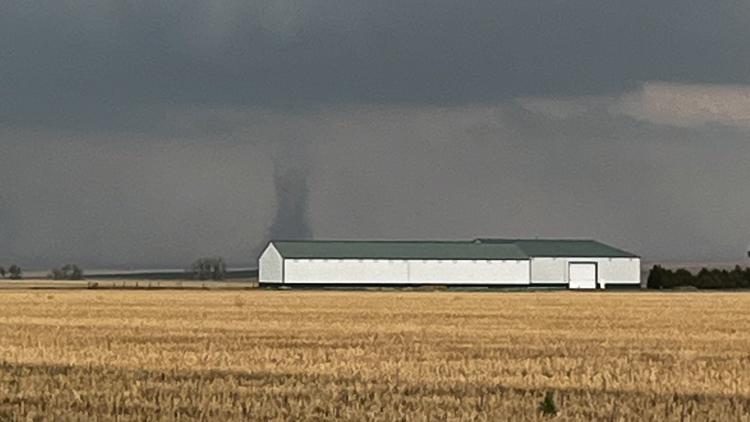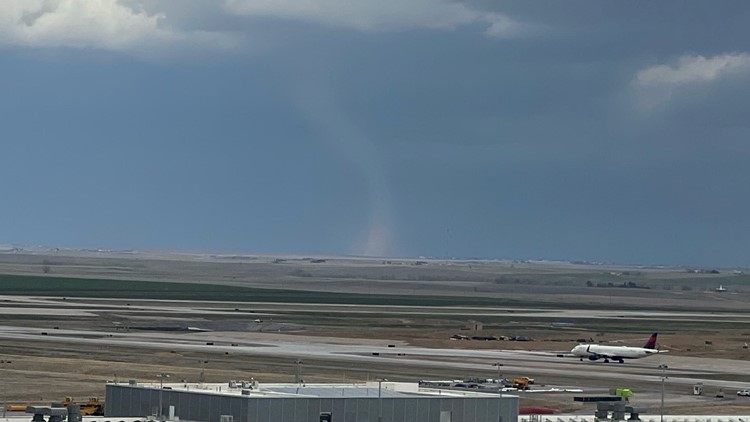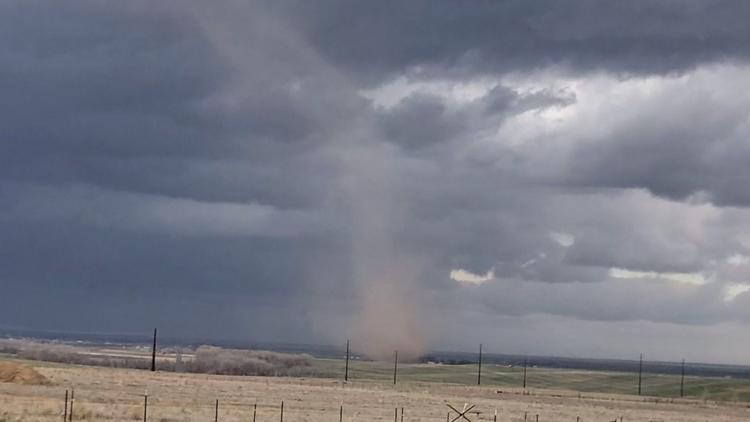COLORADO, USA — Severe weather season has arrived with thunderstorms, heavy rains, large hail and tornadoes.
Tornadoes are most common in the plains from Colorado to the southeast United States, but they have been reported in all 50 states.
The National Weather Service (NWS) said there have been 296 tornadoes in Weld County in Colorado since 1950, as of April 29, 2023, more than any other county in America.
NWS said the Denver Convergence and Vorticity Zone is common storm setup that brings surface winds out of the southeast that collide with air coming off the Rocky Mountains.
These boundaries tend to set up most frequently over Weld County, and the tornadoes they produce are weak non-supercell tornadoes more commonly known as land spouts. Those usually cause little to no damage.
The NWS will issue weather and tornado alerts throughout the severe weather season. Here are some major differences between a Tornado Watch and Tornado Warning and how to prepare, according to NWS.
Tornado Watch
Be Prepared
Tornadoes are possible in and near the watch area. Review and discuss your emergency plans and check supplies and your safe room.
Be ready to act quickly if a warning is issued or if you suspect a tornado is approaching. Acting early helps to save lives.
NWS said watches are issued by the Storm Prediction Center for counties where tornadoes may occur. The watch area is typically large, covering numerous counties or even states.
Tornado Warning
Take Action
A tornado has been sighted or indicated by weather radar and there is imminent danger to life and property.
NWS said during a tornado warning, move to an interior room on the lowest floor of a sturdy building and avoid windows. If in a mobile home, a vehicle, or outdoors, move to the closest substantial shelter and protect yourself from flying debris.
Warnings are issued by a local NWS forecast office.
Warnings typically encompass a much smaller area (around the size of a city or small county) that may be impacted by a tornado identified by a forecaster on radar or by a trained spotter/law enforcement who is watching the storm.
2023 Colorado tornado photos
How to prepare for a tornado
- Be weather ready.
- Check the forecast regularly to see if you're at risk for tornadoes.
- Listen to local news or a NOAA Weather Radio.
- Sign up for notifications.
- Know how your community sends warnings.
- Learn about outdoor sirens.
- Sign up for phone notifications.
- Create a communications plan.
- Have a safe emergency meeting place.
- Identify a safe building or basement.
- Pick a safe room.
- Basement, storm cellar, or interior room on lowest floor with no windows.
- Practice your plan.
- Conduct a family severe thunderstorm drill regularly.
- Don't forget pets if time allows.
- Prepare your home.
- Consider having your safe room reinforced.
- Help your neighbor.
During a tornado
- Listen to local news or a NOAA Weather Radio.
- Go to a basement, storm cellar, or interior room on lowest floor with no windows.
- At school, avoid large rooms like cafeterias, gymnasiums or auditoriums.
- Outside, seek shelter inside a sturdy building immediately. Sheds, storage facilities, tents, and mobile homes are not safe.
- In car, drive to the closest shelter. If you are unable to make it to a safe shelter, either get down in your car and cover your head, or abandon your car and seek shelter in a low lying area such as a ditch or ravine.
SUGGESTED VIDEOS: Severe Weather
MORE WAYS TO GET 9NEWS
Subscribe to our daily 9NEWSLETTER
Download the 9NEWS APP
iTunes: http://on9news.tv/itunes
Google Play: http://on9news.tv/1lWnC5n
HOW TO ADD THE 9NEWS APP TO YOUR STREAMING DEVICE
ROKU: add the channel from the ROKU store or by searching for KUSA.
For both Apple TV and Fire TV, search for "9news" to find the free app to add to your account. Another option for Fire TV is to have the app delivered directly to your Fire TV through Amazon.

